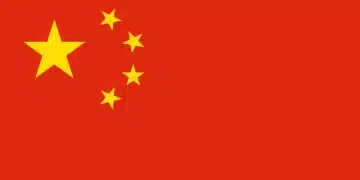TikTok’s Race Against Time: Key Facts About the US Ban and Potential New Owners
The Looming Deadline: Understanding TikTok’s Current Situation
The clock is ticking for TikTok.
By April 5, the company must find a non-Chinese owner or face a sweeping ban in the United States.
This decision isn’t just a policy abstract; it directly impacts the app’s massive American user base, which numbers over 170 million individuals.
TikTok’s Journey to the Deadline
TikTok has been under intense scrutiny over concerns it could be pressured by the Chinese government through its parent company, ByteDance.
These concerns led to the US passing a law requiring TikTok to separate from ByteDance, which became effective on January 19.
Just as the deadline loomed, the Trump administration granted a 75-day extension, temporarily staving off the shutdown that had already started in January.
During this brief interruption, millions of users saw TikTok vanish from app stores, causing widespread dismay.
The Critical April 5 Deadline
Now, with the new deadline rapidly approaching, the pressure is mounting.
After the initial shutdown, TikTok returned to both the Apple and Google app stores in February.
This return was possible because of the extension, but the company remains in a race against time to secure an American buyer.
President Trump has expressed confidence in finding a buyer for TikTok’s US operations and hinted that this situation could be part of a broader trade negotiation with China.

The User Impact
The potential ban isn’t just a political maneuver; it impacts millions of Americans who use TikTok daily for entertainment, information, and even business.
For these users, the app is more than just a passing craze—it’s a digital community.
As TikTok and ByteDance navigate these turbulent waters, they’ll need to address national security concerns while finding a viable solution that adheres to the new legal requirements and reassures their extensive user base.
Looking ahead, the results of this high-stakes scenario could shape not only the future of TikTok but also set a precedent for how digital services are handled in the global market.
National Security Concerns and Legislative Action
The contentious issue of TikTok’s ownership has prompted the US government to enforce a new law.
Passed with overwhelming support, this law mandates TikTok to sever ties with its Chinese parent company, ByteDance, or risk being banned in the United States.
The legislation, which took effect on January 19, 2021, underscores the serious national security concerns tied to TikTok’s expansive reach in the US, with more than 170 million American users relying on the platform daily.
Core Concerns
The primary concern revolves around the potential leverage the Chinese government holds over ByteDance.
Given China’s strict national intelligence laws, US lawmakers fear that ByteDance could be compelled to share American user data with the Chinese government.
This scenario raises alarm bells about privacy violations and potential misuse of data, bolstering fears about espionage and interference in American affairs.
Legislative Motivation
The legislation’s motivation lies firmly in safeguarding national security.
Policymakers argue that any entity under the indirect control of the Chinese government poses a severe risk to the United States.
This is especially significant given TikTok’s algorithmic prowess, which can influence and shape public sentiment, making it a potent tool if controlled or manipulated.
Addressing these security concerns, the law signifies a broader effort to decouple American technology and data from Chinese influence, ensuring that US interests are protected in the digital realm.
While the law is explicit in its demands, the path forward remains fraught with complexity and uncertainty.
As the clock ticks towards the April 5 deadline, the legislative action stands as a testament to the high stakes involved in resolving the TikTok ownership dilemma.
All eyes are now on the potential buyers and proposed solutions for TikTok’s future in the US.
Potential Solutions and Interested Buyers
Prominent U.S. Investors
With the April 5 deadline looming, TikTok is exploring various options to comply with the U.S. mandate to separate from its Chinese parent company, ByteDance.
Among the prominent names being considered are U.S. investors like Oracle and Blackstone.
The idea is to form a new independent global TikTok entity under American ownership, significantly reducing any potential Chinese influence.
Oracle’s existing relationship with TikTok, where much of its U.S. activity is already housed on Oracle servers, makes this a targeted and feasible possibility.
Bids from Big Names
Several other major players have also expressed interest.
Amazon has made a last-minute bid to acquire TikTok, reflecting its strategy to diversify and enhance its presence in the social media scene.
This move would not only help Amazon tap into TikTok’s massive user base but would also integrate its expansive e-commerce ecosystem with the viral nature of TikTok content.
Moreover, YouTube sensation MrBeast, who is well-known for his massive following and engaging content, has reportedly shown interest in TikTok.
His involvement could bring a unique edge to the platform, potentially attracting a larger demographic of users who already follow his digital presence.
The People’s Bid for TikTok
Frank McCourt, a real estate and sports tycoon, has launched “The People’s Bid for TikTok” under his Project Liberty initiative.
This proposal aims to turn TikTok into a public entity not controlled by any single corporate interest.
The initiative reflects a community-driven approach and aims to democratize the decision-making process concerning the platform’s ownership and governance.
New Tech Interests
Perplexity AI, an artificial intelligence startup, has also expressed interest in buying TikTok.
This aligns with the growing enthusiasm in the tech industry to leverage TikTok’s AI-driven engagement and recommendation systems.
A deal with Perplexity would likely enhance the platform’s capabilities, given the startup’s expertise in AI technology.
With these potential buyers lining up, TikTok is exploring multiple avenues to resolve its ownership dilemma.
Each option carries its own set of advantages and challenges, making the final decision a complex yet crucial one for the future of the platform and its vast user community.
Amid these developments, uncertainties about the algorithm remain a contentious issue.
As talks progress, it becomes clear that a delicate balance must be struck to ensure TikTok’s operational independence while addressing national security concerns.
The Algorithm Dilemma
Understanding the complexities surrounding TikTok’s algorithm can’t be overstated.
The algorithm, often seen as the app’s secret sauce, is the key to the platform’s ability to deliver targeted content that keeps users glued to their screens.
But its value makes it a focal point of national security discussions.
Ownership and Control of the Algorithm
Ownership of TikTok’s algorithm is a particularly sticky point in negotiations.
Essentially, the algorithm serves as the bedrock of TikTok’s operations and is integral to its rapid user engagement and growth.
If ByteDance retains ownership, even in a limited capacity, the potential for misuse or external influence remains.
Licensing Arrangements with ByteDance
Talks have included the possibility of licensing the algorithm from ByteDance to a new, independent company created by American investors.
Although this might appear to provide a way forward, it conflicts with the underlying purpose of the US law aimed at severing TikTok’s ties to Chinese control entirely.
The legislative intent is to prevent any possibility of the Chinese government leveraging TikTok’s data through ByteDance, thus ensuring the app operates free from foreign influence.
The Algorithm as a National Security Concern
The core of the debate is whether the algorithm itself poses a national security risk.
By controlling the algorithm, ByteDance could theoretically manipulate the flow of information to American users, which is a significant concern for national security.
There’s fear that the algorithm could be weaponized, subtly influencing public opinion or even censoring content to align with Chinese interests.
These concerns make any potential licensing arrangement extremely controversial.
It goes beyond the data privacy issues commonly discussed; the algorithm directly affects how information is disseminated, creating broader implications for societal stability and political dynamics.
Transition Considerations
While various buyers are interested, each with different visions for TikTok’s future, the algorithm dilemma needs a clear resolution that satisfies both operational independence and national security requirements.
The deadline rush adds pressure to find a suitable arrangement that will last and is acceptable from a legislative standpoint.
As discussions advance, potential buyers and lawmakers are faced with drawing lines that balance technological integrity with the safety and sovereignty of user data.
With TikTok’s algorithm still front and center, the subsequent chapter will delve deeper into the political intricacies and evolving perspectives surrounding TikTok, including Trump’s shifting stance and the broader implications for international trade relations.
Political Dynamics and Trump’s Evolving Stance
Switching Sides: From Ban Supporter to TikTok Defender
President Trump’s stance on TikTok has shifted significantly.
Initially, he was a staunch supporter of banning the app due to national security concerns.
However, his position evolved as the realities of the app’s popularity and potential economic benefits became clear.
This pivot wasn’t just about technology and security; it was about finding a balance that involved international trade, political gains, and voter demographics.
Trade Deal and Tariffs
A significant factor in Trump’s new stance on TikTok relates to the broader trade negotiations with China.
Trump hinted that the resolution of TikTok’s situation could be a part of a larger deal to ease the tariffs he had imposed on Chinese goods.
This maneuver was aimed at leveraging the negotiations to obtain favorable terms from China.
The possibility of integrating TikTok into these discussions exemplified how politics and economics are interwoven, with each decision potentially impacting the other.
Courting the Youth Vote
Another crucial aspect of Trump’s evolving stance is his recognition of TikTok as a vital tool for engaging younger voters.
With over 170 million American users, many of whom belong to the younger demographic, TikTok represents a significant platform for swaying public opinion.
By defending TikTok, Trump aimed to appear as though he was in touch with the interests of the youth, thereby potentially boosting his appeal among a critical voter segment.
Donor Relationships
Trump’s shifting stance was also influenced by key donor relationships.
Notably, billionaire Jeff Yass, a major political donor and a significant stakeholder in ByteDance, played a role.
Trump’s evolving position could be seen as an effort to align with the interests of his influential supporters, suggesting that economic and political allegiances were at play.
As Trump navigated these complex dynamics, the future of TikTok in the United States continued to hang in the balance, with critical decisions needing to be made to satisfy legislative demands and national security concerns.





